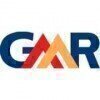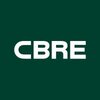Planning Manager
70+ Planning Manager Interview Questions and Answers

Q. When the planned versus actual progress percentage has a negative variance, why does the updated schedule end date not change to a later finish date?
The progress percentage can be negative if the actual progress is less than the planned progress.
Negative variance indicates that the actual progress is behind the planned progress.
The updated schedule end date may not be changed if there are mitigating actions or recovery plans in place.
Factors such as resource constraints, delays in procurement, or unexpected issues can contribute to negative variance without changing the end date.

Asked in G R Infraprojects

Q. What is your project cost, bbs, agreement clause, critical activities, total float
Project cost, bbs, agreement clause, critical activities, total float are key aspects of project planning and management.
Project cost refers to the total expenses incurred in completing a project.
BBS (Bill of Quantities) is a document used in construction projects to itemize the materials, parts, and labor required.
Agreement clause outlines the terms and conditions agreed upon by all parties involved in the project.
Critical activities are tasks that must be completed on time ...read more
Planning Manager Interview Questions and Answers for Freshers

Asked in Hindustan Construction Company

Q. What is your understanding of planning and the different levels of plans?
Planning involves setting goals and determining the actions needed to achieve those goals. Different levels of plans include strategic, tactical, and operational plans.
Planning is the process of setting goals and determining the actions needed to achieve those goals.
Different levels of plans include strategic plans, which are long-term and set the overall direction of the organization.
Tactical plans are medium-term plans that focus on specific departments or functions within ...read more
Asked in Naoolin Realcon

Q. What processes should be maintained for daily project monitoring?
Daily project monitoring involves structured processes to ensure timely progress tracking and issue resolution.
Establish a daily stand-up meeting to discuss project status and roadblocks. For example, a 15-minute meeting each morning.
Utilize project management software (e.g., Trello, Asana) for real-time updates and task assignments.
Implement key performance indicators (KPIs) to measure project progress, such as completion percentage or milestone achievements.
Conduct regular ...read more

Asked in GMR Group

Q. How will you calculate the percentage of completion of a project?
Percentage of completion of a project can be calculated using the cost-to-cost method or milestone method.
Calculate %age of completion by comparing actual costs incurred to date with total estimated costs for the project.
Alternatively, %age of completion can be determined by tracking completion of specific project milestones.
Formula for cost-to-cost method: %age of completion = (Actual costs incurred / Total estimated costs) * 100
Example: If actual costs incurred are $50,000 ...read more

Asked in CS Construction

Q. How do you prepare an EPC Contract bill and a Turnkey Contract bill?
Preparing EPC and Turnkey Contract bills involves detailed analysis of project scope, costs, milestones, and deliverables.
Understand the scope of work outlined in the contract
Break down the project into specific tasks and deliverables
Assign costs to each task based on estimates and budget
Include milestones for payment schedule
Review and finalize the bill with all stakeholders involved
Ensure accuracy and clarity in the bill to avoid disputes
Planning Manager Jobs




Asked in VA Tech Wabag

Q. How project progress is updated on primavera?? What's are the option of updating progress?
Project progress in Primavera can be updated through various methods, ensuring accurate tracking and reporting.
1. Manual Updates: Users can manually enter progress percentages for each task.
2. Timesheets: Team members can submit timesheets that reflect the actual hours worked.
3. Earned Value Management: This method calculates progress based on the value of work completed versus planned.
4. Schedule Updates: Users can adjust start and finish dates to reflect actual progress.
5. ...read more

Asked in Capacit'e Infraprojects

Q. What are the outputs of different manpower roles?
Different manpowers have different outputs depending on their skills and expertise.
Output of a planning manager includes strategic plans and project timelines.
Output of a marketing manager includes marketing campaigns and sales strategies.
Output of a software developer includes code and software applications.
Output of a customer service representative includes customer satisfaction and issue resolution.
Output of a graphic designer includes visual designs and branding material...read more
Share interview questions and help millions of jobseekers 🌟


Asked in Capacit'e Infraprojects

Q. What things are to be considered in an MIS report?
MIS reports should consider data accuracy, relevance, timeliness, and presentation.
Accuracy of data
Relevance of data to the report's purpose
Timeliness of data
Clear and concise presentation of data
Consistency in data formatting
Identification of trends and patterns in data
Comparison of current data with historical data
Inclusion of key performance indicators (KPIs)

Asked in NTPC GE Power Services

Q. What is grid code, what is the critical path, what is project performance,
Grid code defines technical requirements for connecting to the grid. Critical path is the longest sequence of tasks determining project duration. Project performance measures how well project objectives are being met.
Grid code sets out technical standards and requirements for connecting power plants to the grid
Critical path is the longest sequence of tasks that determines the overall duration of a project
Project performance evaluates how well a project is meeting its objectiv...read more

Asked in VA Tech Wabag

Q. What could cause a project delay even if the progress exceeds the initial plan?
Project delays can occur even with progress exceeding plans due to various unforeseen factors.
Resource availability: Key personnel may be unavailable due to illness or other commitments, impacting project timelines.
Scope changes: Stakeholders may request additional features or changes, leading to delays despite initial progress.
Quality assurance: Increased focus on quality may slow down progress as more time is spent on testing and revisions.
Dependency issues: Delays in depen...read more

Asked in Capacit'e Infraprojects

Q. Are you able to prepare a budget?
Yes, I am able to prepare budgets.
I have experience in preparing budgets for various projects and departments.
I am proficient in using budgeting software and tools.
I have a strong understanding of financial statements and forecasting.
I am able to work closely with stakeholders to gather necessary information and make informed budget decisions.

Q. Did you load the schedule with resources?
Yes, I loaded the schedule with resources.
I ensured that all tasks in the schedule had the necessary resources assigned to them.
I considered the availability and skills of the resources when assigning them to tasks.
I regularly reviewed and updated the schedule to ensure that resources were allocated efficiently.
For example, in a construction project, I loaded the schedule with labor, equipment, and materials needed for each task.

Asked in Dilip Buildcon

Q. Scheduling process and details for consodering durations with reapect to productivity.
The scheduling process involves considering durations in relation to productivity.
The scheduling process starts by identifying the tasks that need to be completed.
The duration of each task is estimated based on historical data or expert judgment.
Productivity levels are taken into account when determining the duration of tasks.
Factors such as employee skills, equipment availability, and potential bottlenecks are considered.
Efficiency measures, such as task dependencies and res...read more

Asked in Plasser India

Q. How can the project management lifecycle be implemented?
The project management lifecycle can be implemented by following a structured approach that includes planning, execution, monitoring, and closure.
Define project scope and objectives
Develop a project plan with timelines and milestones
Assign tasks and responsibilities to team members
Monitor progress and make adjustments as needed
Close out the project and evaluate its success
Use tools such as Gantt charts and project management software
Communicate regularly with stakeholders

Asked in KLC CONSTRUCTION

Q. How do you approach planning and estimation?
Planning and estimating involves identifying tasks, setting timelines, and determining resource requirements.
Identify all tasks required to complete the project
Set realistic timelines for each task
Determine the resources needed for each task
Consider potential risks and contingencies
Regularly review and adjust the plan as needed

Asked in Dilip Buildcon

Q. General productivity norms Vs actual industry consoderation as per site.
The productivity norms in planning management vary across industries and sites.
Productivity norms in planning management are specific to each industry and site.
These norms are determined based on factors such as the nature of work, resources available, and industry standards.
For example, in the manufacturing industry, the productivity norm for planning managers may be measured in terms of units produced per hour.
In the construction industry, it may be measured in terms of pro...read more

Asked in KEC International

Q. What is an achievement in your career that is not mentioned in your CV?
I successfully led a cross-functional team to streamline operations, resulting in a 20% increase in efficiency and significant cost savings.
Implemented a new project management tool that improved team collaboration and tracking.
Conducted training sessions for staff, enhancing their skills and productivity.
Developed a strategic plan that aligned departmental goals with company objectives, leading to a 15% increase in revenue.

Asked in L&T Construction

Q. What is the construction tolerance for NATM tunneling?
Construction tolerance for NATM tunneling depends on various factors.
The type of rock or soil being excavated
The size and shape of the tunnel
The depth of the tunnel
The presence of water or other geological features
Typically, a tolerance of +/- 50mm is used for NATM tunneling
However, this can vary depending on the specific project and site conditions

Asked in Currie & Brown

Q. What is the shape of a project progress curve?
The shape of project progress curve is typically an S-curve.
The project progress curve starts off slow as the project is initiated and planned.
It then accelerates as work is being executed and completed.
Finally, the curve levels off as the project nears completion and final tasks are finished.
The S-curve represents the typical pattern of project progress over time.
Asked in Naoolin Realcon

Q. What is the relationship with the procurement department?
The procurement department is essential for sourcing materials and services needed for effective planning and operations.
Collaboration on budget: Work with procurement to align on budget constraints and prioritize purchases.
Supplier evaluation: Involve procurement in assessing suppliers to ensure quality and reliability.
Inventory management: Coordinate with procurement to maintain optimal inventory levels and avoid stockouts.
Contract negotiations: Partner with procurement to ...read more

Asked in VA Tech Wabag

Q. Can a project have more than one critical path?
Yes, a project can have multiple critical paths, indicating several sequences of tasks that determine project duration.
Multiple Dependencies: If tasks have multiple dependencies, they can create different paths that are all critical. For example, if Task A and Task B both lead to Task C, both paths (A-C and B-C) are critical.
Parallel Activities: In projects with parallel activities, multiple sequences can be critical. For instance, if Task D and Task E can be completed simult...read more
Asked in Mka Engineers Exporters

Q. How much low package you can expect?
The expected low package can vary depending on factors such as experience, qualifications, and industry standards.
The low package can be influenced by the candidate's level of experience and qualifications.
Industry standards and market conditions also play a role in determining the expected low package.
It is important to research and understand the average salary range for the position in the specific industry and location.
Negotiating skills and the ability to showcase value ...read more

Asked in KLC CONSTRUCTION

Q. What is the rate per square foot?
The rate of per square feet varies depending on the location, type of property, and other factors.
The rate of per square feet is not a fixed value and varies from property to property.
Factors such as location, type of property, amenities, and market demand can affect the rate.
For example, the rate of per square feet for a luxury apartment in a prime location will be higher than a standard apartment in a less desirable area.
Similarly, commercial properties in high footfall are...read more

Asked in Trident Group

Q. How do you plan yarn usage for towels and sheeting?
Yarn planning for towel/sheeting involves determining the required yarn count, twist, and ply based on the desired fabric weight, texture, and strength.
Determine the desired fabric weight and texture
Calculate the required yarn count based on the fabric weight and texture
Determine the required twist and ply based on the desired fabric strength
Consider the availability and cost of the yarn
Ensure consistency in yarn quality and color
Plan for any additional yarn requirements for ...read more

Asked in Sidel

Q. What is the difference between planning and process planning?
Planning is the process of deciding what to do and how to do it, while process planning is the detailed planning of specific processes.
Planning involves setting goals, objectives, and strategies to achieve them.
Process planning involves breaking down the overall plan into specific steps and determining the resources needed for each step.
Planning is more high-level and strategic, while process planning is more detailed and tactical.
An example of planning would be deciding to l...read more

Asked in L&T Geostructure

Q. What are the elements of a Price Variation Bill?
Price variation bill includes elements like base price, taxes, discounts, and additional charges.
Base price: The original price of the product or service before any adjustments.
Taxes: Additional charges imposed by the government or local authorities.
Discounts: Reductions in price offered to customers.
Additional charges: Extra fees for services like delivery or installation.

Asked in VA Tech Wabag

Q. What is evm? how it reflect the project status?
EVM, or Earned Value Management, is a project management technique that integrates scope, schedule, and cost to assess project performance.
EVM uses three key metrics: Planned Value (PV), Earned Value (EV), and Actual Cost (AC) to evaluate project progress.
For example, if a project has a PV of $100,000, an EV of $80,000, and an AC of $90,000, it indicates a cost overrun.
The Cost Performance Index (CPI) can be calculated as EV/AC, which helps determine cost efficiency; in this ...read more

Asked in Raj Corporation Limited

Q. Do you know any softwares like MSP and Primavera
MSP and Primavera are powerful project management tools used for scheduling, resource allocation, and tracking project progress.
Microsoft Project (MSP): A widely used project management software that helps in planning, scheduling, and managing resources effectively.
Primavera P6: A robust project management tool designed for large-scale projects, offering advanced features for scheduling and resource management.
Gantt Charts: Both MSP and Primavera provide Gantt chart functiona...read more

Asked in KEC International

Q. What is delay analysis and what is its importance?
Delay analysis assesses project delays to determine causes and impacts, crucial for effective project management.
Identifies the root causes of delays, such as resource shortages or unforeseen events.
Helps in quantifying the impact of delays on project timelines and costs.
Facilitates communication among stakeholders by providing clear evidence of delay causes.
Examples include using techniques like the Critical Path Method (CPM) to analyze schedule impacts.
Supports claims for t...read more
Interview Questions of Similar Designations
Interview Experiences of Popular Companies








Reviews
Interviews
Salaries
Users

















